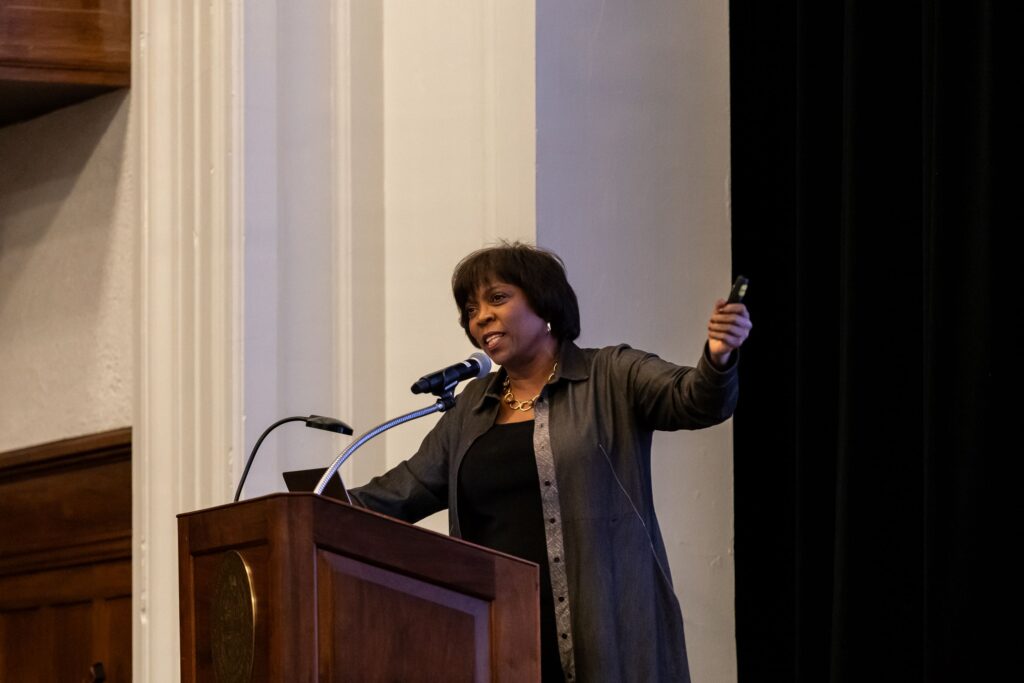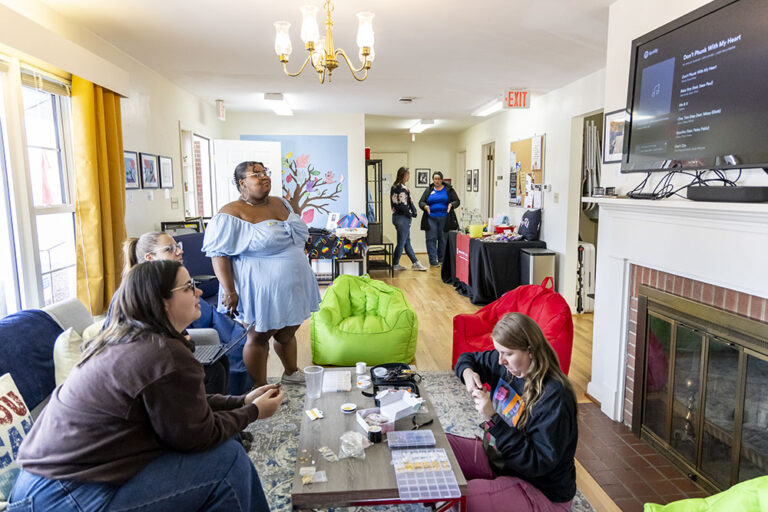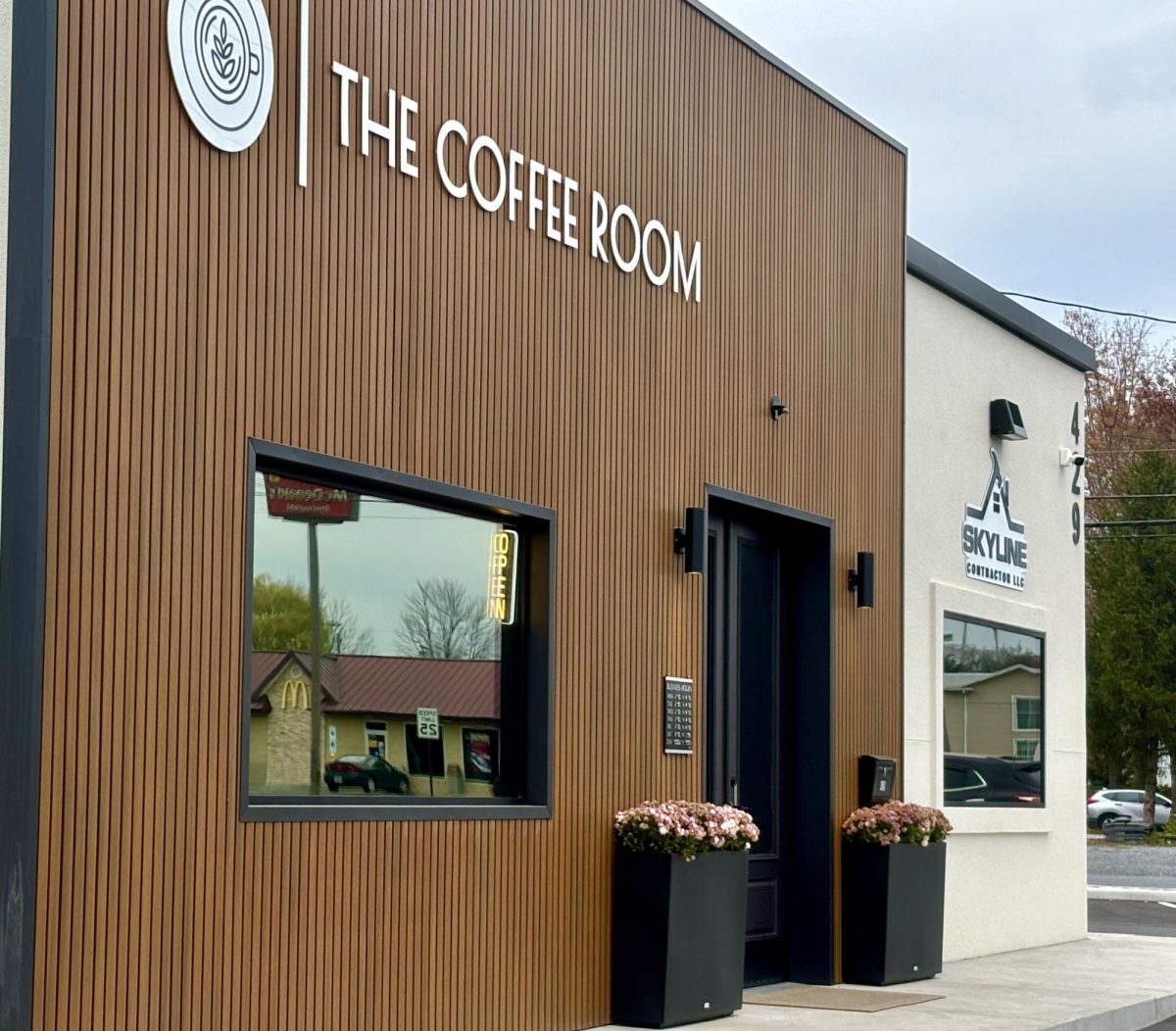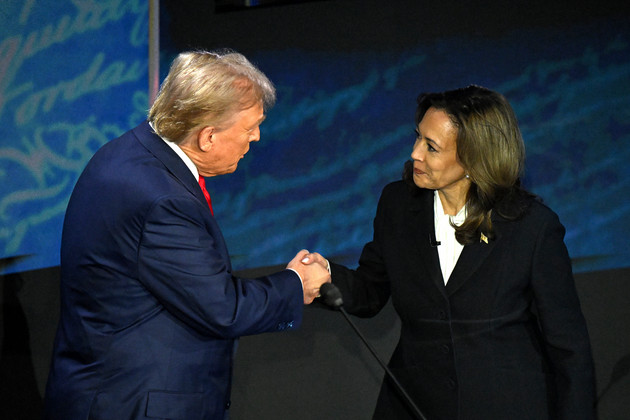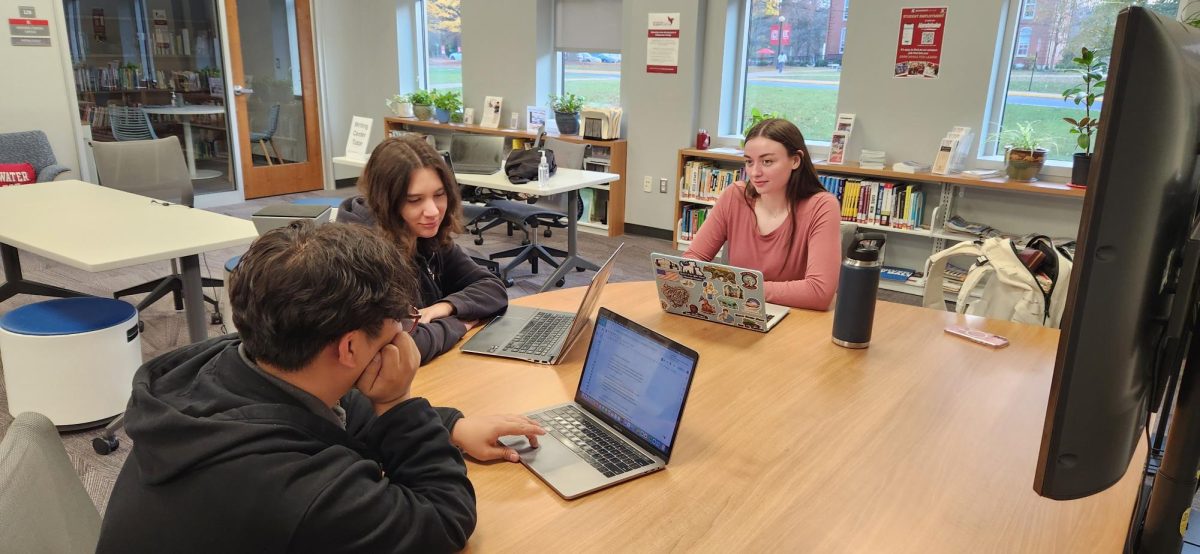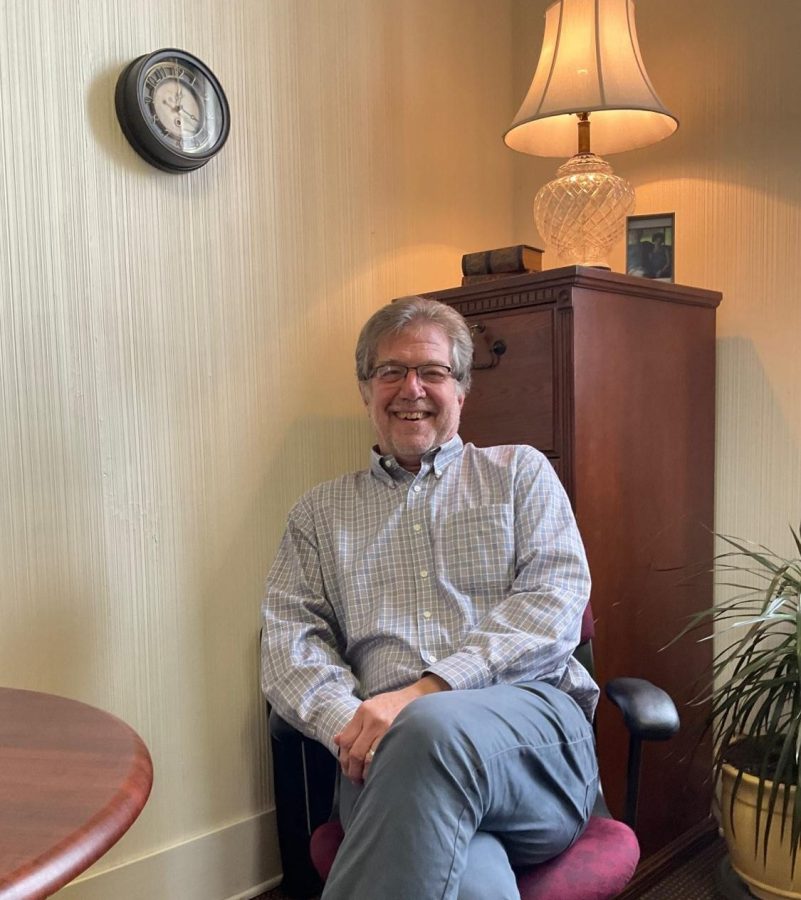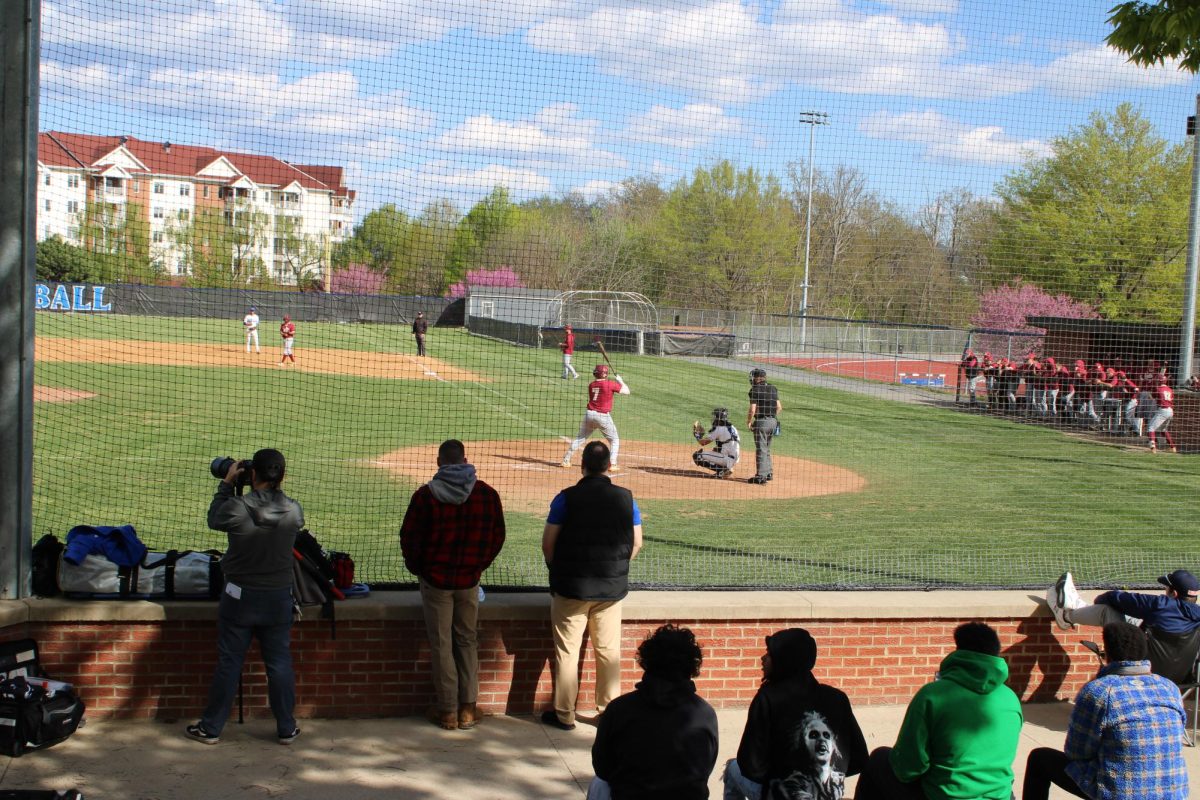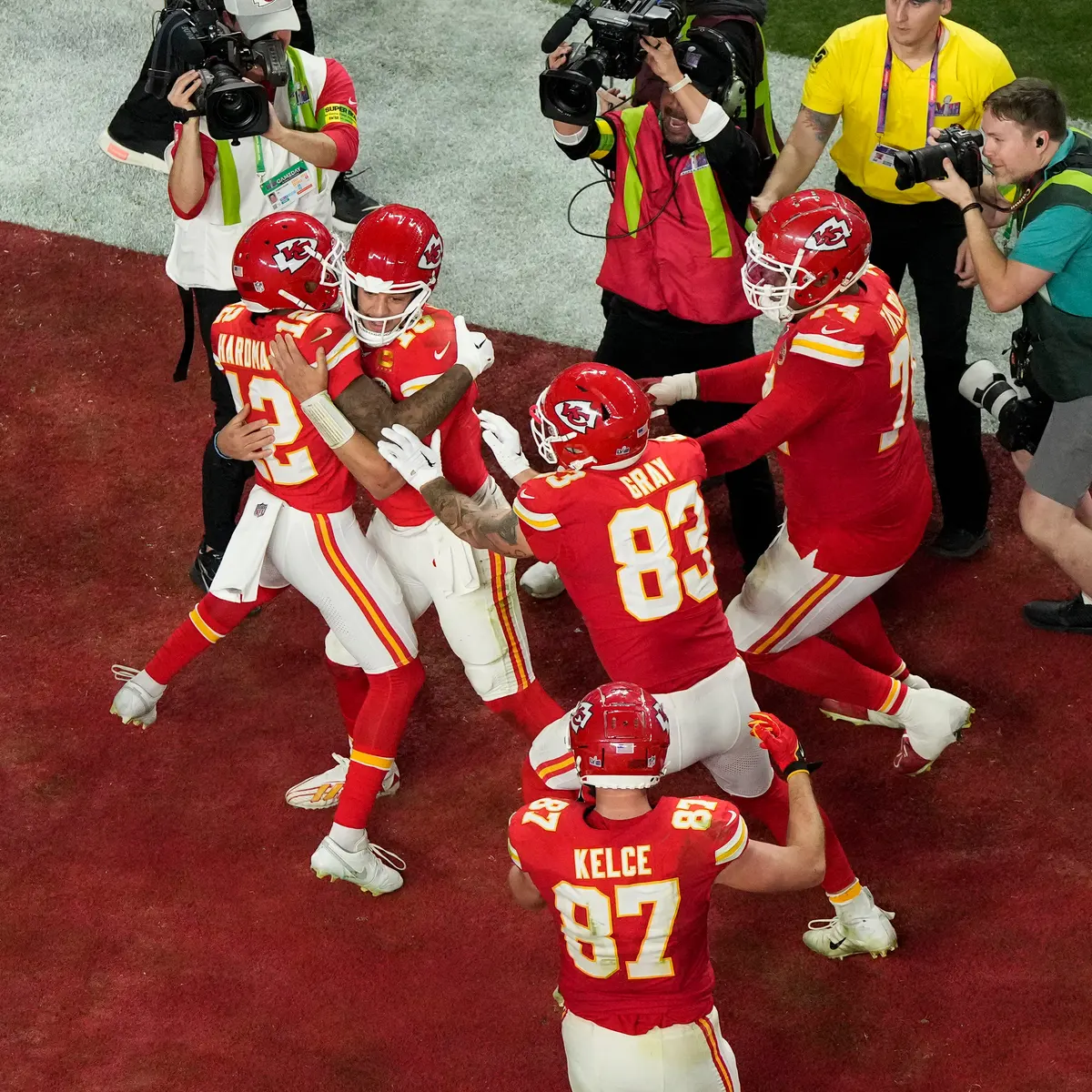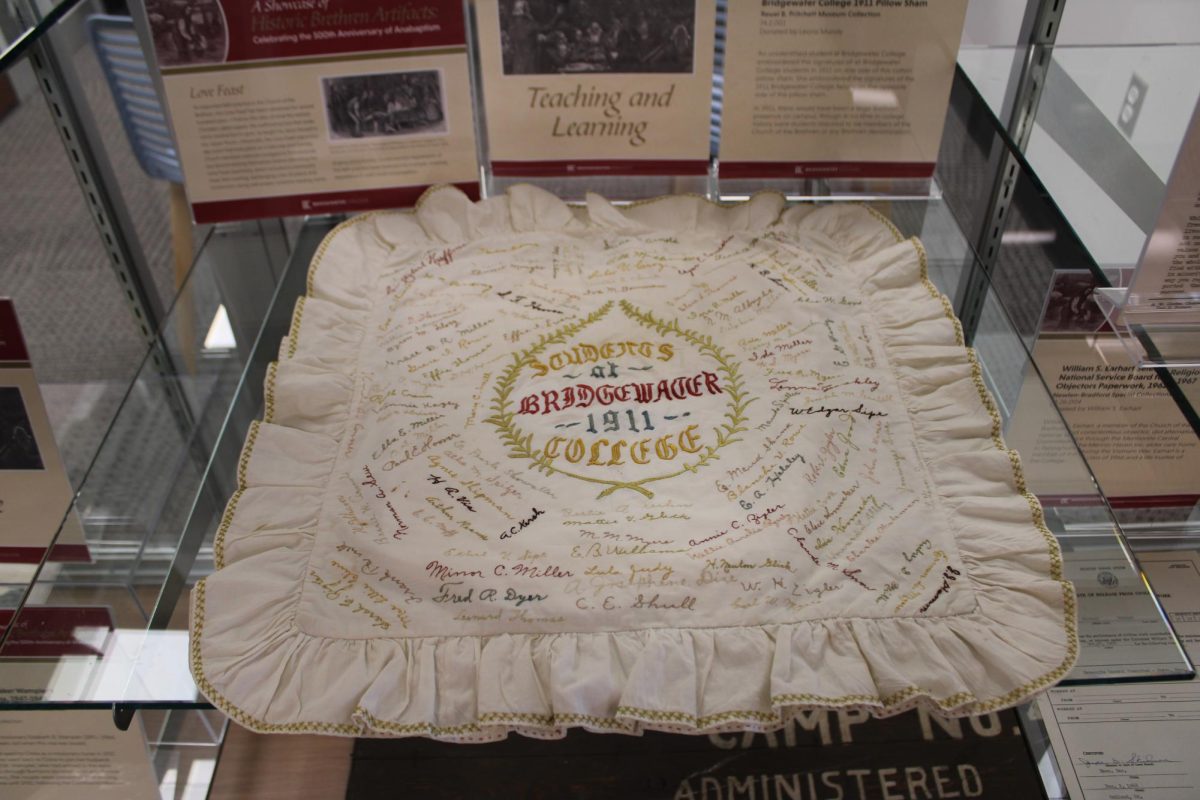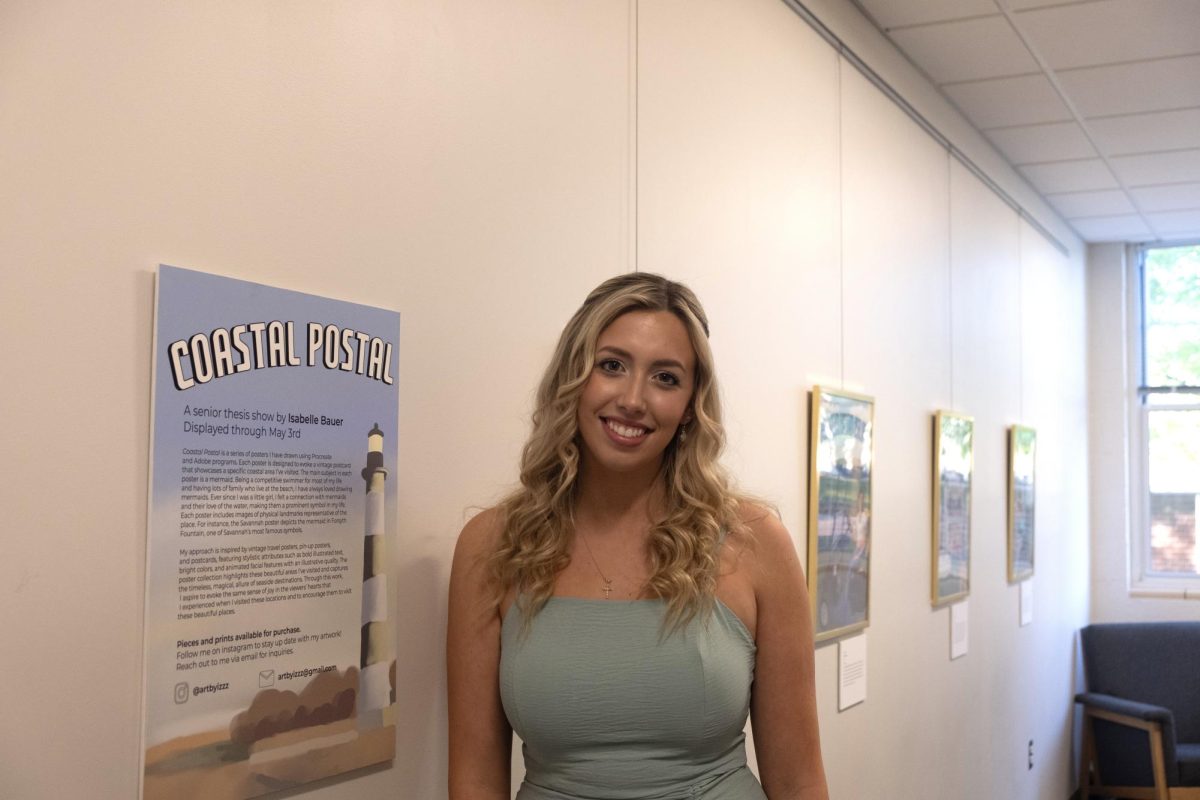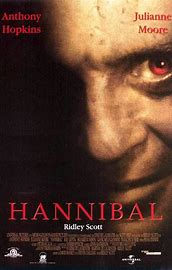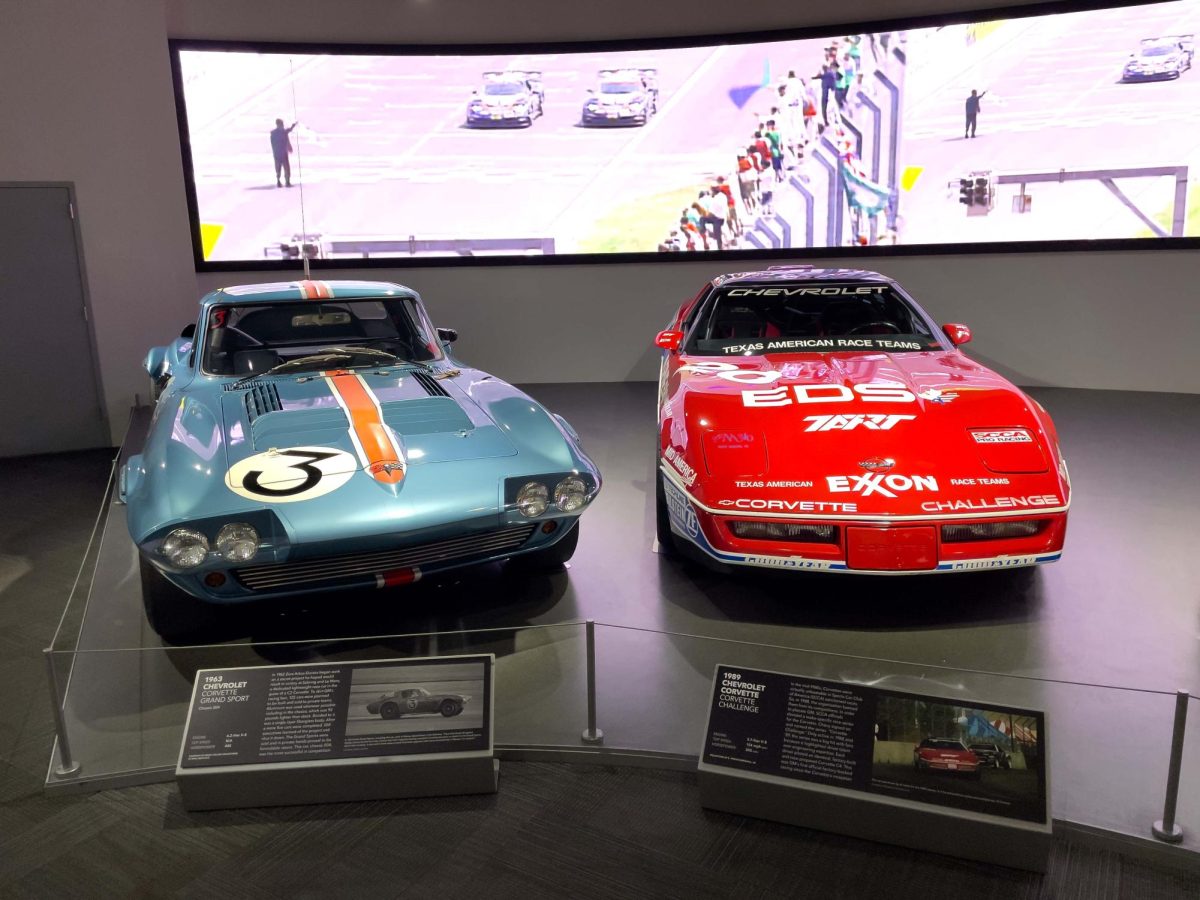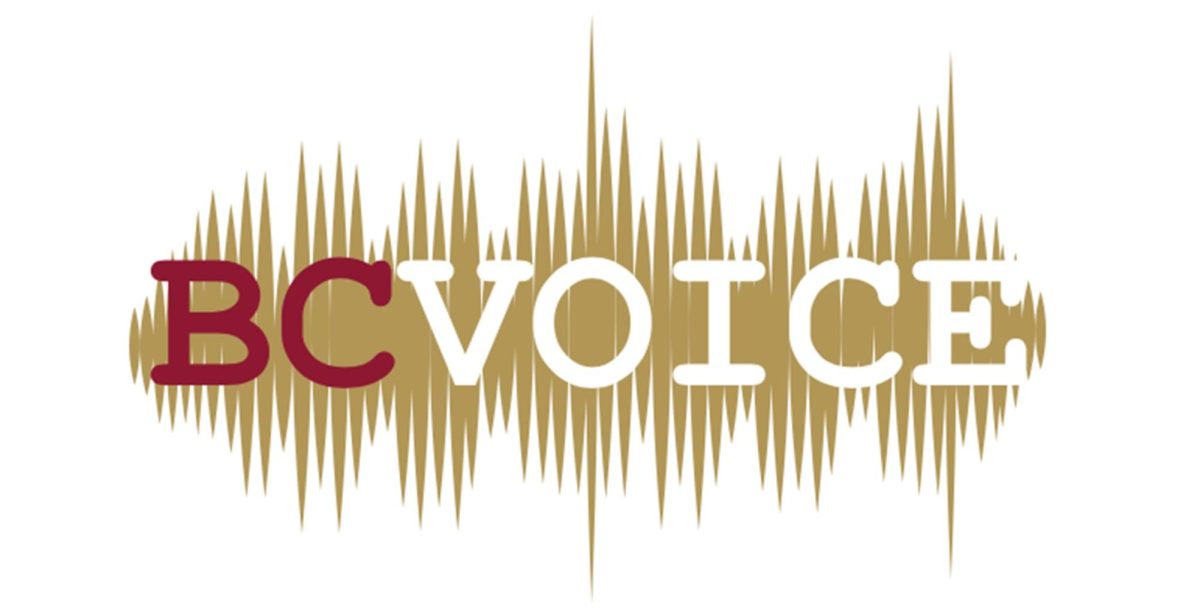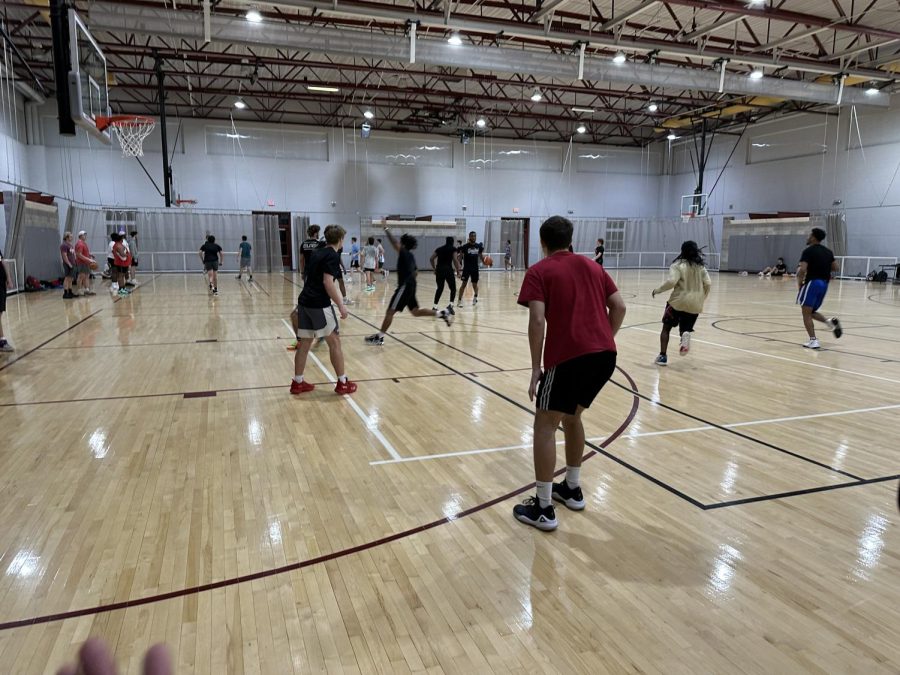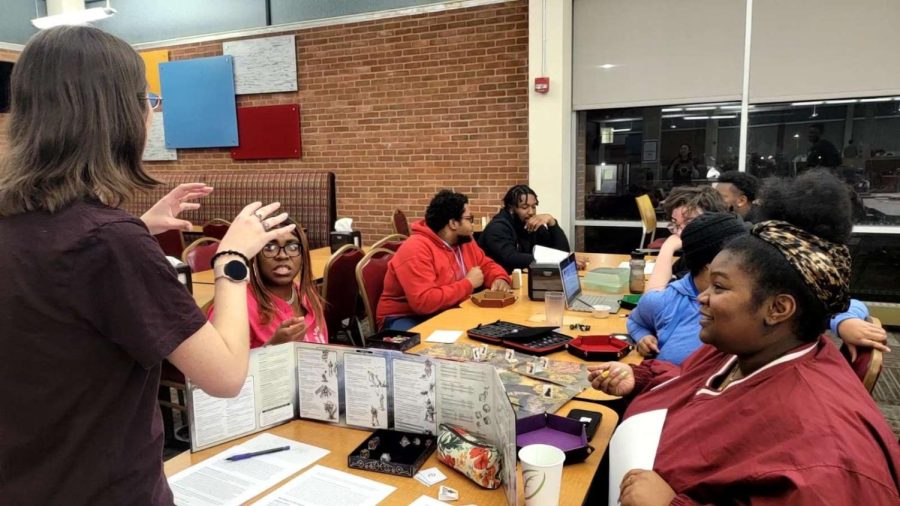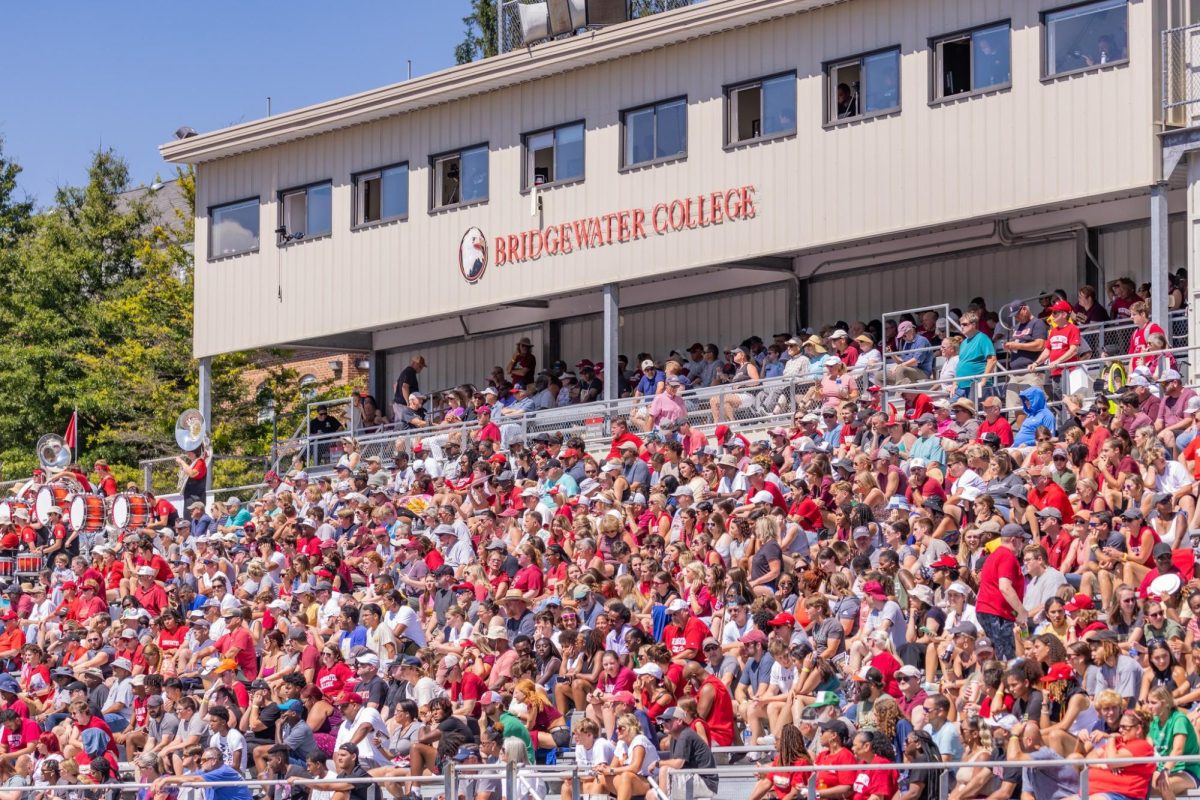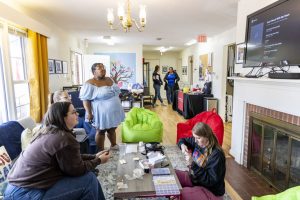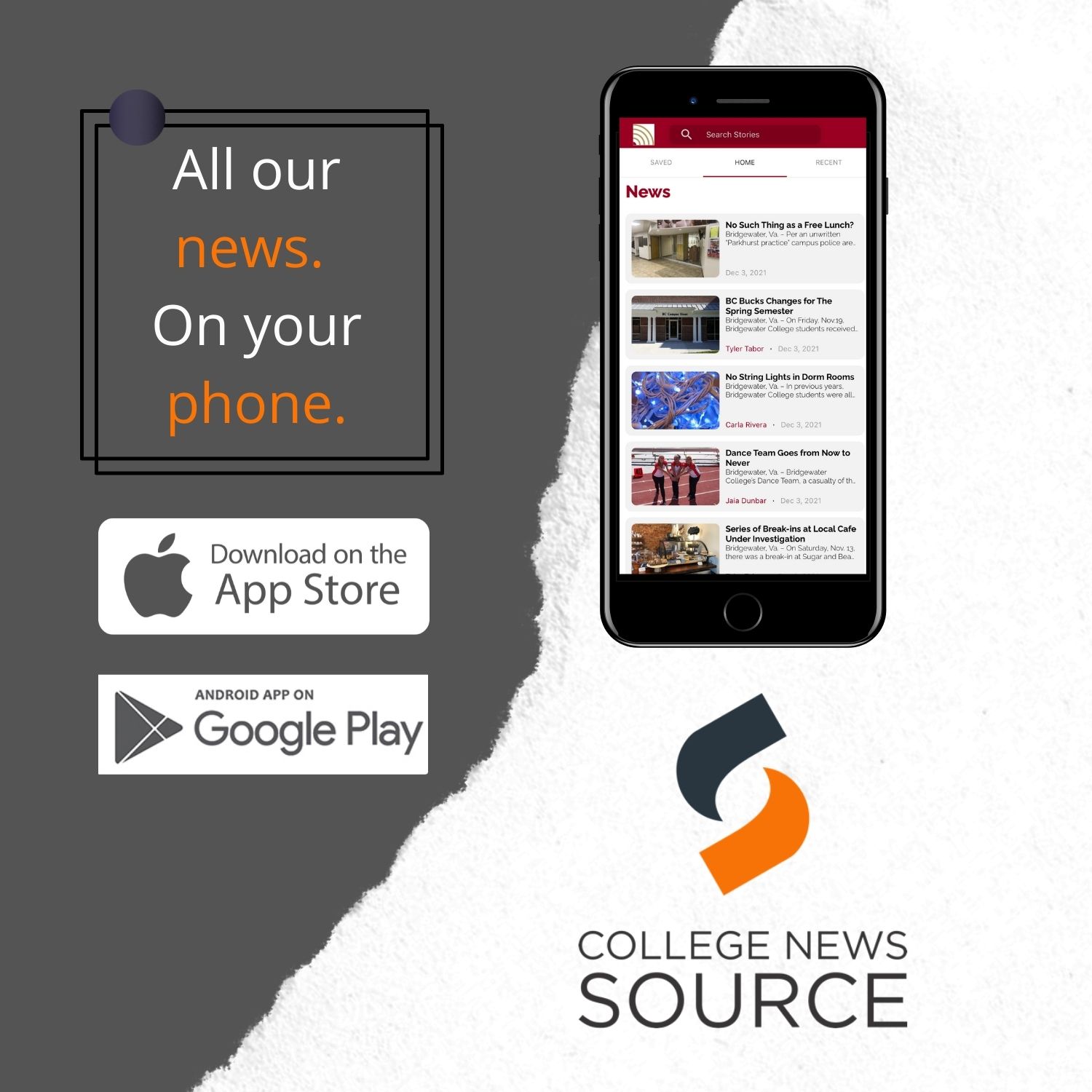Community Conversation on Appearance and Employment
Eagles Weigh in on “Form of Stripping Away Identity”
April 23, 2019
Bridgewater, Va. – On the evening of March 27, as part of Bridgewater’s Community Conversations series, which seeks to bring together individuals to publicly share their ideas and listen to the opinions of others, students and other members of the Bridgewater community gathered in the Kline Campus Center Lobby to discuss how appearance can affect employment.
The topic of the conversation, “Hair and Ink: Diversity, Inclusion, and Workplace Culture,” was created by Victoria Hill, a junior at Bridgewater. Roslyn Vargas, Assistant Professor of Economics and Business Administration at Bridgewater, led the discussion. The event was co-sponsored by Career Services.
Sherry Talbot, the Director of Career Services and Internships, opened up the conversation by giving a brief introduction.
She stated people entering the workforce are currently facing “a very interesting situation” concerning how to represent themselves physically while also respecting the standards of the workplace. This is because there are currently so many different generations with varying viewpoints, ranging from Baby Boomers to Generation Z, participating in the workforce.
Vargas began the discussion by talking about cases that were brought up by her students in her Human Resources (HR) class.
She mentioned the case of Chastity Jones, an African American woman hired as a customer service representative in 2010, who was told that she would have to cut off her dreadlocks to work at the company.
Jones went to the company’s H.R. department to question why she would have to cut her hair. Their response was that it was the company policy because dreadlocks tend to get messy which would look unprofessional.
Feeling that this policy was discriminatory, Jones filed a suit against the business. In 2013, the Equal Employment Opportunity Commission (EEOC) joined her case. However, in 2014, the Supreme Court ruled that the policy did not count as discrimination, because the judges felt that dreadlocks are not solely a part of African American culture.
Several individuals present at the discussion strongly disagreed with this ruling.
Rather than make employees change, employers should try to better educate themselves about certain forms of physical expression. One student stated he felt it was “hard to not see it as discrimination.” He said even though there are some people with dreadlocks that are white, the majority are black. He also mentioned that he felt this ruling tied into the United States’ history of creating laws that discriminate against people of color.
Hill stated she felt this was “a form of stripping away identity.” By making employees conform to certain standards, she explained, it makes the workplace less diverse.
Others present felt in certain situations, it is acceptable for businesses to have certain expectations for the physical appearances of their employees.
Another student argued businesses have “a certain right to control what their employees look like, as long as it’s not discriminatory.”
A third student stated she felt changeable physical characteristics should not matter so much to individuals. “If it’s something you’re not willing to do,” she reasoned, “then maybe you shouldn’t pursue that job.”
Overall, the discussion exemplified goals of the Community Conversations series. Individuals on both sides of the argument brought up points and were able to discuss their opinions.


